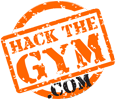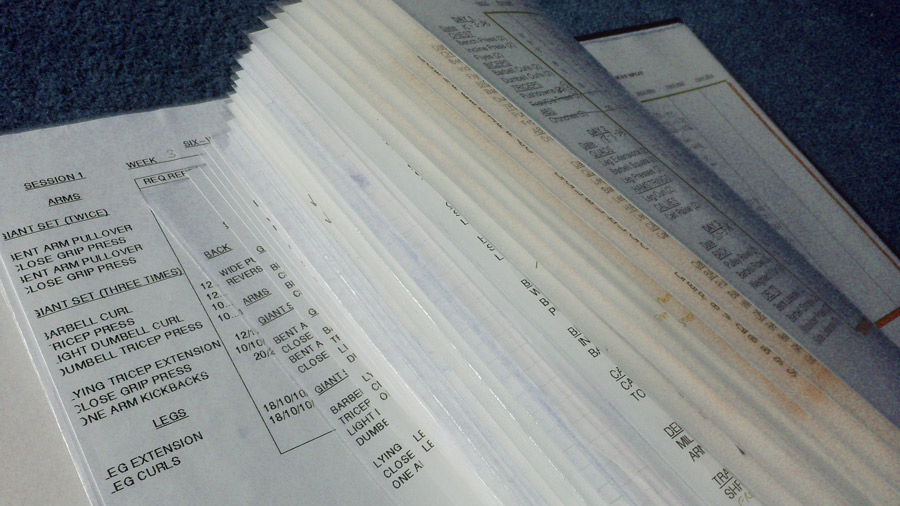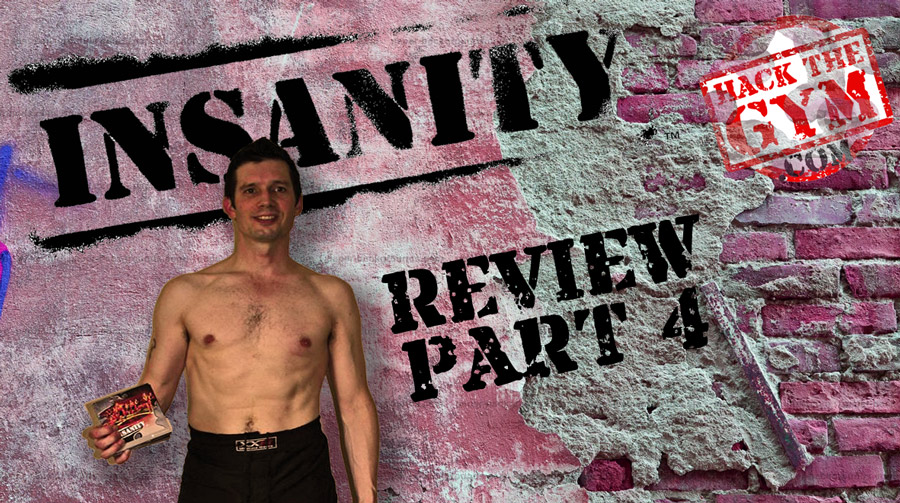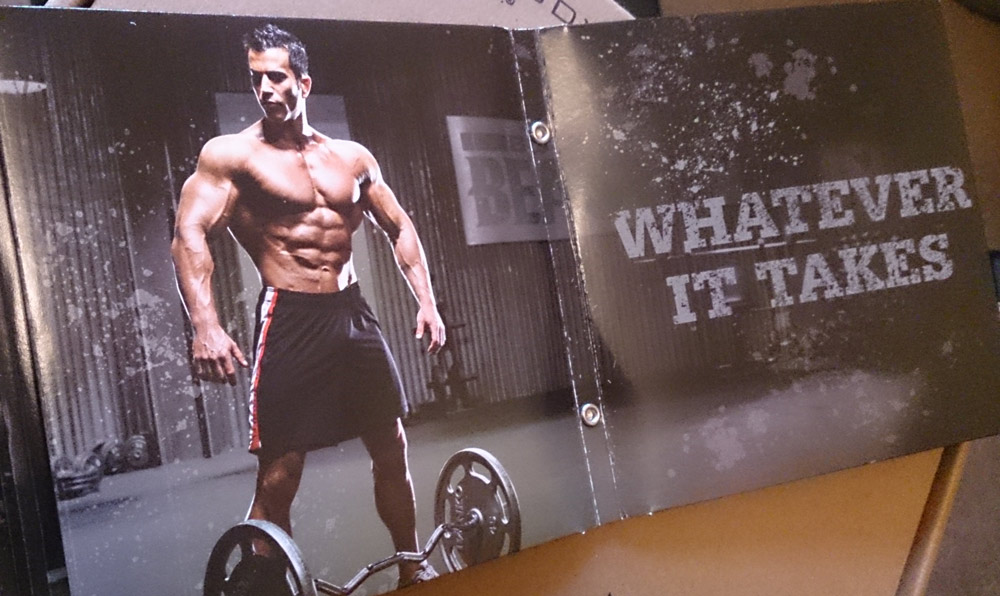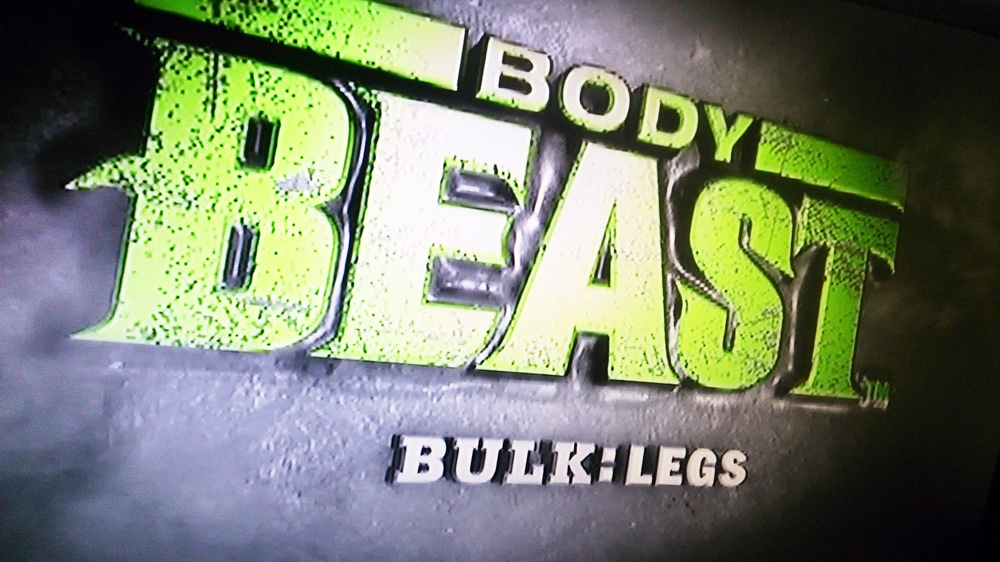Want to know the tips to getting lean, slapping on muscle and making gains in record time?
I did too, so I’ve been looking through my years of training diaries and copious dietary and workout notes from the 1990s, checking out what worked and what didn’t, examining where I was making progress and what hindered me.
I’ve put some distance between the gym rat version of me from years ago and where I am now, so I’ve been able to add objectivity.
Now I’m back on the road to training hard and learning a lot about how things have changed in the workout world over the last 20 years. But there are still a lot of similarities.
The most important thing is to get the fundamentals right.
Put a few of these tips into action each week and you’re guaranteed to see faster results!
1. Chart Your Progress
Make sure you keep a record of everything that you do in the gym and in your training. Whatever you do, write it down.
If you can’t remember what you did last week, how are you going to know how much to push yourself this week?
If you’re a runner, use an app like runkeeper. If you’re working out in the gym, take a notebook and write it down.
Make sure that you also weigh and measure yourself and take pictures. There’s no better way of gauging your progress than in real numbers. Here’s a worksheet that you can download to track your progress.
When you can see how much you’re improving you’ll want to keep on tracking your progress. And when the gains start slowing this indicates that it’s time to shake up your system and change your routine.
2. You Have Got To Warm Up
Whether it’s chest day, back day or leg day, your workout should always start with a warm-up. Do not start with stretches, those will just damage those cold muscles and set you up for an injury.
Start with five to ten minutes of light cardio. Jogging it out for a minute, followed by some jumping jacks, then some press ups, one minute of good mornings and then into some high knees running on the spot, finishing with some mountain climbers. Rest for a minute then repeat this routine at a higher intensity.
That should get you in a situation where you can target the specific muscles that you intend to work that day.
As I mentioned before, do not stretch. Save that for the cooldown. Stretching before working out can make you unstable and prone to injury.
3. Supercharge Your Push-Up
Press ups are a great workout addition, whether you’re on the cardio trail or lifting weights. After a bench press to failure, immediately drop in a set of 12 to 15 press ups to give you that extra slice of growth stimulation.
But the basic push-up is only the start.
Go for push-up jacks to get you in great shape, because they work you hard. Do a standard press up, but as you lower your body, also kick out your legs to the side. As you push back up, jump your heels back together.
And that’s just the start, you can go for:
- Push Up Jacks
- Moving Push Ups
- Point & Stretch Push Ups
- Spiderman Push Ups
- Side Push Ups
- One Arm Push Ups
- Fingertip Push Ups
- Tricep Push Ups
- Squat Push Ups
- Clapping Push Ups
- Side Plank Push Ups
- Decline Push Ups
- Handstand Push Ups
I’ve also put a post together, walking you through all the different push up variants, so why not check it out?
4. Workout With High Intensity And Make It Count
You need to build foundations for exercise intensity. If you’re just starting out, then take it easy, take it slow. Don’t be hasty in getting crazy, as this can easily bring you injury and destroy your dreams before you even start.
However, after a month or so, it’s time to get nasty. Step up the intensity to step up the effectiveness of the workout.
Whenever you think you’ve pushed it to the limit during a session, you’re always going to have that little bit extra to give. Squeeze out every last bit of effort from your workouts and you’ll see your gains soar.
Whatever you do, do not let your form suffer. Correct form is vital. Let your form slip and you’re opening yourself up to potential injury and this could set you back weeks or even months.
5. Lift Slowly And With Purpose
When working out with weights, many people push their muscles against gravity fairly slowly and then let the weight drop far more quickly.
However, if you work slower in both directions you are maximizing each move. Lift and lower to a five second count in each direction to make more gains.
Making more of the negative – or ‘eccentric’ – part of your reps will stimulate your muscles into more growth.
By using the five second count and accentuating the eccentric part of your rep, you’re bringing to different mechanisms into play: time under tension and rep tempo.
6. Place Most Of Your Focus On Those Compound Exercises
Instead of isolating your muscles with exercises such as the bicep curl, you can make the most of your workout time by doing the exercises that work multiple muscle groups at once.
With just a few exercises, you could get a full-body workout and your muscles are working together as they do in the real world, rather than alone. Some of the greats of compound exercise include:
- squats
- deadlifts
- good mornings
- lunges
- pushups
- bench presses
- military presses
- rows
- pullups
- dips
Make sure you work some or all of these into your routines.
7. Rest Between Sets, But Not For Too Long
We can all be guilty of it: rest periods that last a little longer than they should, eventually becoming chat sessions. There’s nothing wrong with taking a breather between sets, but that’s all it should be.
Watch the clock, time your rest periods and stick to them, don’t let them get out of control. The longer you allow the muscle to rest, the more pump you lose, and the less momentum you’ll have going into your next set. Make sure your rest break is long enough for you to go on and maintain optimal weight and form, but no longer.
That’s the great benefit of following DVD programmes like Insanity Training and Body Beast from Beachbody. The rest periods are set in the DVD programme, so once Shaun T or Sagi Kalev get stuck into the next set, you have to as well.
8. Stretch When You’re Done
Never, ever finish a workout without spending a few minutes stretching your tired muscles. Giving your body a much-needed stretch will ensure that you increase your flexibility and ease some of that delayed onset muscle soreness (DOMS). These post-workout stretches are great no matter what your workout of choice.
Even if it’s just two minutes of stretching at the end of your session, make sure you do it. To maximise the impact of your stretching session, try taking a cold shower or bath straight afterwards, as it has some odd muscle building side effects.
9. Take A Break From The Routine
It’s all about the long haul. You want to maintain your fitness regimen across the years, rather than losing enthusiasm and crashing out never to train again. That’s something that happened to me. The reason?
I trained too hard for years and didn’t give myself any time off. My training partner and I even went out looking for a gym that was open on Christmas Eve, because it fell on a training day. This happened more than one year. Thing is, I kinda burned away my enthusiasm and life started getting in the way.
To get results, give yourself some time off. Aim to workout consistently for ten months of the year and give yourself the other two months off. You can do this by taking two weeks rest every six weeks, five months on, one month off, or however you want to play it. Just make sure you take the time off. When you accept that fitness isn’t all-or-nothing, you’re more likely to stick with it for life.
10. Eat Slow-Digesting Carbs Most Of The Time, But Get High Once In A While
This is a great gainer. When you eat slow-digesting carbs such as whole grains, brown rice and wholemeal pasta, you lower your insulin levels and allow your body to burn more fat. It’ll also give you more endurance during exercise. Be sure that all the meals you eat before your workout, including the one immediately before, include about 40 grams of slow-digesting carbs.
There are times when you’ll need to go for the fast foods with a high glycaemic index. The two times to go fast are:
When you wake up, but only if your aim is to gain mass. You’ve been fasting for eight hours or more. This causes your muscle and liver glycogen (the storage form of carbs in the body) to crash. This drop in glycogen signals your body to tear down muscle tissue for fuel. Grabbing some fast-digesting carbs as soon as you get out of bed will boost your insulin and quickly restock your glycogen levels to stop the destruction of muscle.
The second time to take fast-digesting carbs is within 30 minutes after your workout. During this time, the fast carbs will give you an insulin spike, driving those carbs straight into your muscles and quickly restocking the muscle glycogen used during the workout. In addition, the insulin spike is a signal for your muscles to kickstart the anabolic pathway, stimulating muscle growth and halting muscle breakdown.
Fast and slow foods are as follows:
The Slow, Low-GI Foods
- White spaghetti
- Bran Cereal
- Porridge
- Oranges
- Macaroni
- Grapes
- Baked beans in tomato sauce
- Carrots
- Wholemeal bread
- Bananas
- Oatbran
- Sweetcorn
The Mid GI Foods
- Muesli
- Boiled potatoes
- Sultanas
- Pitta bread
- Basmati Rice
- Honey
- New potatoes
- Couscous
- Rye bread
- Shredded wheat
- Crumpet, toasted
- Weetabix
The Fast, High-GI Foods
- Mashed potato
- White bread
- Rice cakes
- Jacket potato
- Baguette
- White rice
- Maltodextrin
11. Protein. Protein. Protein.
Pay attention to getting the protein your muscles need to rebuild. Protein and amino acids are the building blocks of life and if you don’t get them into your body in large amounts, you are going to get very little out of your workouts. Whether it’s cardio or strength training, your muscles are going to suffer without at least 0.8 to 1 gram of protein for every pound of bodyweight. That’s around 2 grams per kilo pf bodyweight.
Use a high quality whey protein if you’re having trouble getting the protein from other sources.
Back in the 1990s, for best results we were told that we needed to get hold of whey protein isolate that’s been harvested using ion exchange methods. However, things have changed and it’s all about membrane filtration these days.
Ion exchange is a chemical method that achieves protein separation by a complex pH adjustment method. Raw whey is sent through a column that has an affinity for protein. The protein is collected and all the other macronutrients pass through. Once everything else has passed through, chemical reagents are introduced into the column to release the protein.
This yields a very high protein content, up to 96%, and with no fat or carbs. However the pH adjustment that needs to take place can reduce the biological activity of the protein and its micronutrients. In short, much of the bioactive component of the whey is denatured.
On the other hand, membrane filtration is a cold temperature processing method that allows for the production of a high protein finished whey where the protein remains intact (undenatured) and is not treated with chemical reagents. Membrane filtration uses a filter with different pore sizes which allows carbohydrates and minerals in raw whey to pass through and retain the whey protein. The proteins are not changed in any way and they retain the protein profile of naturally occurring whey. The beneficial bioactives are retained and have functions like stress relieving, faster recovery and immune development.
Membrane filtration yields a high protein product with a small amount of naturally occurring fat, lactose and mineral. This small addition of fat is well worth the price for the added bioactivity, intact protein and micronutrients of membrane filtered whey protein.
12. Water, Water Everywhere And You Gotta Make Sure You Drink
Be sure to hydrate throughout the day. It takes a couple of hours for your body to absorb the water, so you can’t just drink right before exercise. Make it a habit to drink water regularly throughout the day and aim for at least three to four pints each day. One of these pints should be drank while you’re exercising.
Not drinking enough during your workout can lead to fatigue, dizziness, and headaches afterward, so save yourself from a bad day and take water breaks during your workout.
If you’ve just finished a hard core intense workout, an electrolytic sports drink or coconut water may be better as they will help replenish the sodium and potassium that you’ve lost during your workout.
13. Use Creatine
Back around 1995, when I first started looking at the use of creatine, it was still a new phenomenon in the fitness and bodybuilding world, with a lot of general confusion surrounding how it should be taken.
20 years on and creatine is now one of the most researched sports supplements in the world. It has been subject to hundreds of scientific studies over the last few years and there is now a robust pool of data available for us to take a look at.
If you’re aiming to improve performance during short periods of athletic activity, like lifting weights, sprinting or other high energy burst sports, then you need to take creatine. However, if you’re considering taking creatine to improve your effectiveness at an endurance sport, forget it. There is no evidence to suggest that creatine helps with gains in endurance sports.
For the real scoop on creatine and its associated metabolic pathways, take a look at my recent post or this at-a-glance infographic.
Conclusions
So that’s it. Just make sure that you follow some of these tips and mix them into your current thinking to enhance your gains. It may well be that you’re doing a lot of this anyway; if that’s the case, then well done!
And the most important thing is stickability. Keep on going and make sure you’re in it for the long term. There are a few things you can do in order to make sure you don’t stagnate or abandon your fitness goals.
Minimise your chances of getting injured by warming up propely at the beginning of a session and stretching at the end.
Chart your progress so you’ve got something to beat the next time. This will give you the extra push to keep going and keep making gains.
Take a break from training once in a while, particularly if you’re enjoying the exercise. Do nothing for a couple of weeks and you’ll come back mentally stronger and even more geared up to succeed.
Focus on your food. Eat clean and eat often, this is the fundamental bedrock of your whole training regimen. If the fuel isn’t right then the performance is going to suffer. A lot.
And the most important thing to remember is that turning up is the hardest part. If you’re not psyched up to train, just do it anyway. Once you’re there and ready to go you’re less likely to abandon it.
Focus on just turning up to your training session and the rest will follow. Hey, look upon it as doing something special for your future self.
Did you find this post useful?
If you enjoyed this post, found it helpful and think others would benefit from reading it too, it would make me extra happy if you shared it using the share icons below – thank you, it’s very much appreciated!
Also, if you have any questions or comments that you would like to ask or share, please comment below. Thank you.
